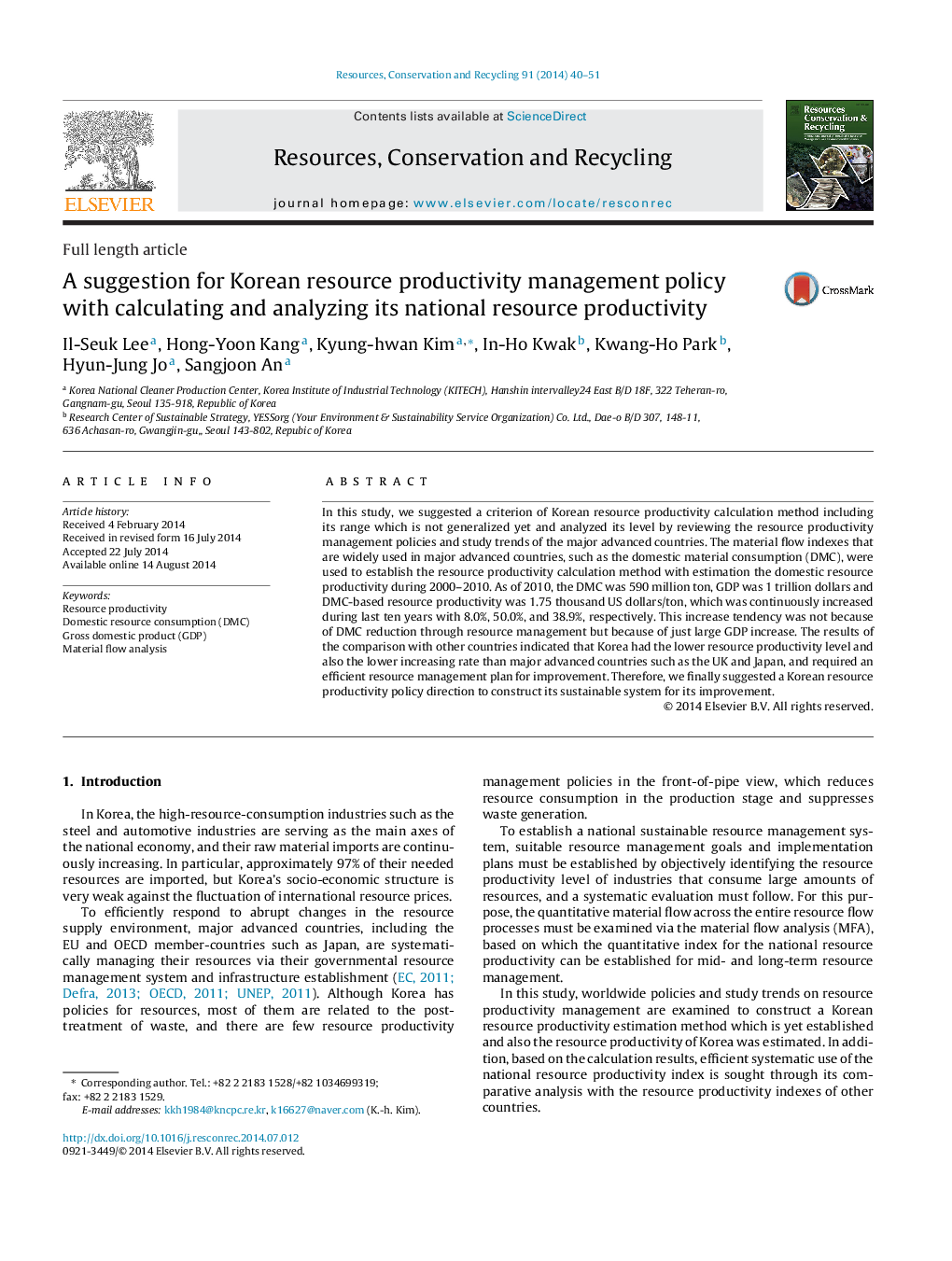| Article ID | Journal | Published Year | Pages | File Type |
|---|---|---|---|---|
| 1062859 | Resources, Conservation and Recycling | 2014 | 12 Pages |
•The estimation method of Korean resource productivity using material flow indices is reestablished.•The resource productivity in Korea is calculated from 2000 to 2010.•The resource productivity indices are presented in comparison with other countries.•Guideline is proposed to enhance the resource productivity in Korea.
In this study, we suggested a criterion of Korean resource productivity calculation method including its range which is not generalized yet and analyzed its level by reviewing the resource productivity management policies and study trends of the major advanced countries. The material flow indexes that are widely used in major advanced countries, such as the domestic material consumption (DMC), were used to establish the resource productivity calculation method with estimation the domestic resource productivity during 2000–2010. As of 2010, the DMC was 590 million ton, GDP was 1 trillion dollars and DMC-based resource productivity was 1.75 thousand US dollars/ton, which was continuously increased during last ten years with 8.0%, 50.0%, and 38.9%, respectively. This increase tendency was not because of DMC reduction through resource management but because of just large GDP increase. The results of the comparison with other countries indicated that Korea had the lower resource productivity level and also the lower increasing rate than major advanced countries such as the UK and Japan, and required an efficient resource management plan for improvement. Therefore, we finally suggested a Korean resource productivity policy direction to construct its sustainable system for its improvement.
